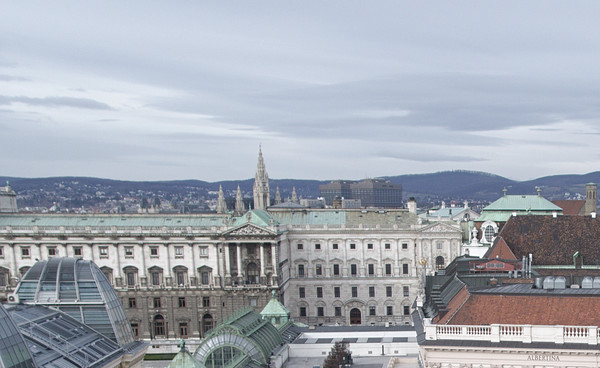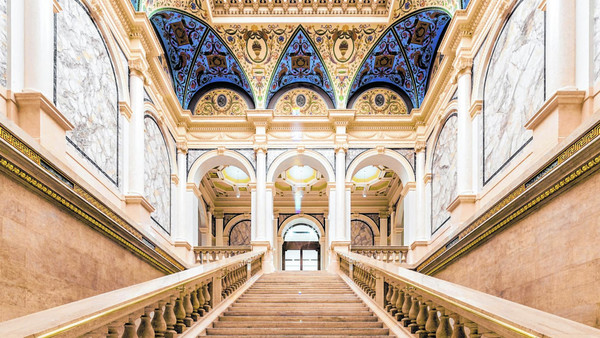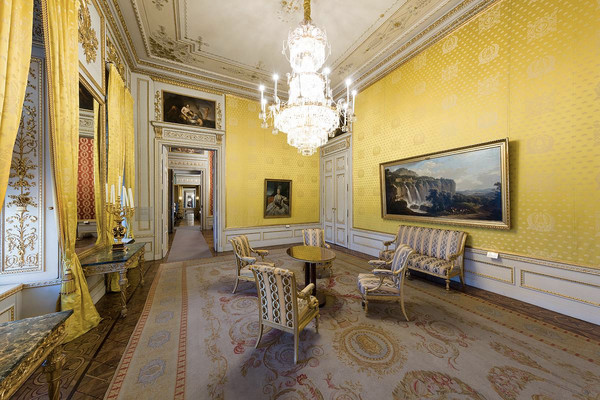
[아츠앤컬쳐] 비엔나의 알베르티나미술관은 유럽에서 가장 유명한 박물관 중 하나이다. 비록 가장 크지는 않지만 과거로부터 현재까지의 소묘, 그림, 판화들을 상당히 많이 소장하고 있다. 위치는 국립오페라극장(슈타츠오퍼) 뒤 왕궁정원(부르크가르텐) 옆으로, 매주 일요일에 빈소년합창단과 함께하는 미사가 열리는 황제의 미하엘 교회 앞에 있다.
원래 팔레 에르츠헤르초그 알브레히트(알브레히트공작의 궁전)는 오스트리아-헝가리제국을 다스린 합스부르크 가문의 역사적인 거주지다. 이 이름은 설립자인 알베르트 카지미르 헤르초그 폰 작센테센에서 유래하는데 그는 마리아 테레지아 여제의 사위이자 헝가리왕국의 군주로 1776년 컬렉션 수집을 시작했다.

첫 번째 소장지는 현재 슬로바키아의 수도인 브라티슬라바였으나, 1792년에 오스트리아령 네덜란드에서 온 물품들로 수집품을 늘려서 비엔나로 옮겼다. 현재 르네상스시대부터 현재까지의 그림과 판화의 전 세계적인 컬렉션은 약 백만 점으로 집계되고 있다.

알브레히트 공작은 50년 이상 상인, 경매인 및 개인 네트워크를 통해 수집했으며, 미켈란젤로 연기 드로잉에서 알브레히트 뒤러의 ‘Feldhasen’(어린 토끼), 예술사에서 높은 가치를 지닌 루벤스의 어린이 초상화까지 가장 중요한 걸작 컬렉션 중 일부를 모았다. 공작은 총 16 명의 자녀를 둔 대가족인 오스트리아 마리아 테레지아 여제의 다섯 번째 딸과 결혼했는데, 그의 아내 마리아 크리스틴은 프랑스의 왕비 마리 앙투아네트처럼 영향력이 컸다. 공작부인은 올바른 예술품 컬렉션에 대한 감각이 뛰어났고 그녀의 부모로부터 재정적 지원을 받아 대공을 강력하게 지원했다.
대공은 처음부터 미술사적 기준에 따라 독일과 오스트리아 예술가를 시작으로 네덜란드, 이탈리아 및 프랑스 예술가로 체계적으로 컬렉션을 구성해갔다. 생애의 마지막 20년 동안 공작은 현대예술가의 그림을 수집했는데, 대부분 역사적인 기념물과 판화를 포함하여 전원의 정밀 소묘이다. 그는 그의 모든 그림과 인쇄물에 Albert of Sachsen을 상징하는 ‘AS’ 인장을 찍었다.

1816년, 그는 자신의 컬렉션을 “세습재산”으로 선언했다. 즉, 컬렉션을 전체나 일부나 판매할 수 없으며 가구 및 도서관을 제외하고 궁전을 포함하여 군주 소유로 남게 됨을 의미한다. 1822년 그의 후계자이자 입양된 아들 칼 대공에게 양도했고, 이후 1919년에 오스트리아공화국은 합스부르크법에 따라 합법적인 소유주가 되었다. 가구와 도서관은 다른 새 주인들에게 하나씩 팔렸다. 멋진 샹들리에, 리옹의 실크벽지 및 쪽매상감마루바닥 중 일부가 궁전에 남아있다. 궁전은 옛 도성의 꼭대기에 위치하며 일부 전시실은 외부 영향을 강력하게 막고 귀중한 물건을 보관하기 위해 완벽한 요새 내에 있다.
2007년부터 알베르티나미술관은 최근 몇 년간 서울에서 일부 전시된 Batliner ‘Monet to Picasso’의 개인 컬렉션도 소장하고 있다.

Albertina in Vienna
The Albertina in Vienna is one of the most recognised Museums in Europe. It is not the largest but having significant collection of the paintings, drawings and prints of the past and present.
The location is just behind the national Opera and next to the Burggarten and in front of the private Church of the Emperor the Michaela Church, where up to now every Sunday a mess celebration is hold with the Vienna Boys chorus.
Originally Palais Erzherzog Albrecht is the historic Residence of the Habsburgs family, the ruling family of the Austrian-Hungarian Empire. The name was created based of the founder’s name Albert Casimir Herzog von Sachsen-Teschen the son in law of Emperor Maria Theresia and representative in the Kingdom of Hungary who founded the collection in 1776. First location was in Bratislava now capital of Slovakia, but already in 1792 he expanded the collection with items from the Austrian Netherlands and moved the collection to Vienna. Presently the Encyclopaedia and universal collection of drawings and prints from the Renaissance up to the present times are counted by one million pieces.

Duke Albrecht collected via a European network of traders, auctioneer’s and private persons over 50 years and created one of the most significant collections of unique masterpieces from drawings of Michelangelo act drawings via Albrecht Dürer's “Feldhasen” (The Young Hare ) until Rubens Children portraits, which are counted high value in the history of art. The Duke was strong supported by his wife the Archduchess Maria Christine, 5th daughter of Maria Theresia Empress of Austria, the large family which counted a total of 16 children, whereas some became very influential, as Maria Antoinette, Queen of France. The Archduchess Maria Christine had a good sense for the right collection of art, and from her parents the financial support, which gave the Duke a strong support.
The Duke was well organised, from begin on, he organized the collection systematic based on art historic criteria depending on school and countryside motive starting with German and Austrian artists followed by Dutch, Italian and France ones. In the last 2 decades of this life the duke collected drawings of modern artists “Maîtres modernes”, most of the drawings are detail countryside motives with historic monuments and selective printings. On all his drawings and prints he stamped his insignia “AS” for Albert of Sachsen.
In 1816 he declared his collection as “Fidelkomiss” meaning it is not allowed to sell in part or whole and will remain in the ownership of the Monarchy including the palace except the mobiliary and Library. In 1822 it was transferred to his successor and adopted son Archduke Karl and later after the Monarchy, in 1919 the Republic of Austria became the rightful owner, based on the Habsburg Law.
The mobiliary and library was sold piece per piece to different new owners. Some of the wonderful chandelier, the silk wallpaper from Lyon and Intarsia Floors remain in the palace. The Palace itself is located in the top of the old city wall and some of the exhibition rooms are located within fortress the which give a strong protection against outside influence and is perfect of housing valuable items.
Since 2007 the Albertina is housing the private collection of Batliner “Monet until Picasso” which partly have been shown in Seoul in the recent years.
글 | 볼프강 슬라빈스키 Wolfgang Slawinski
서울명예시민, 한·오스트리아협회 부회장

